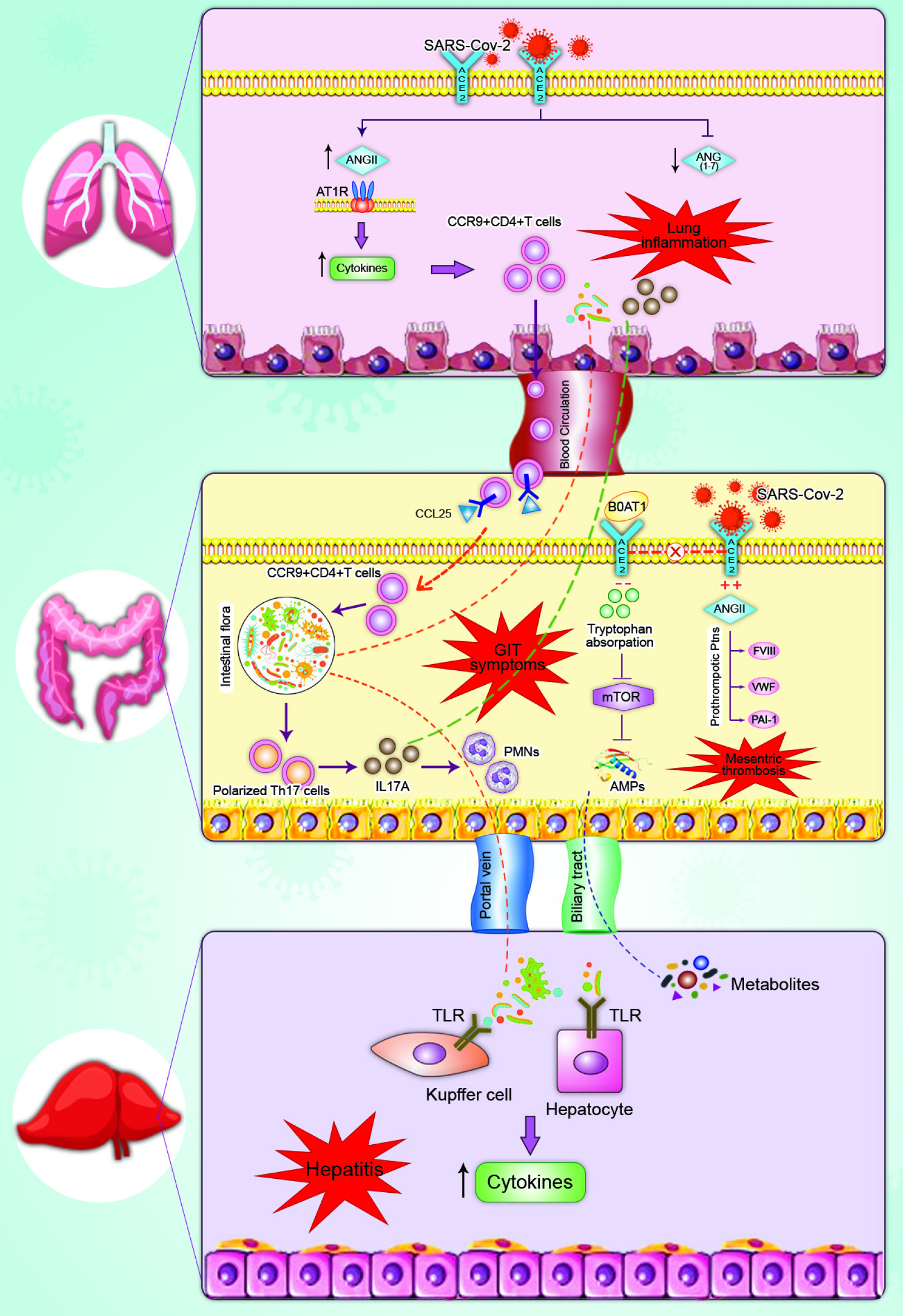Copyright
©The Author(s) 2021.
World J Gastroenterol. Jul 28, 2021; 27(28): 4504-4535
Published online Jul 28, 2021. doi: 10.3748/wjg.v27.i28.4504
Published online Jul 28, 2021. doi: 10.3748/wjg.v27.i28.4504
Figure 3 Mechanism of gastrointestinal symptoms in patients with coronavirus disease 2019.
(1) Gut-lung axis: Severe acute respiratory syndro
- Citation: Mohamed DZ, Ghoneim MES, Abu-Risha SES, Abdelsalam RA, Farag MA. Gastrointestinal and hepatic diseases during the COVID-19 pandemic: Manifestations, mechanism and management. World J Gastroenterol 2021; 27(28): 4504-4535
- URL: https://www.wjgnet.com/1007-9327/full/v27/i28/4504.htm
- DOI: https://dx.doi.org/10.3748/wjg.v27.i28.4504









